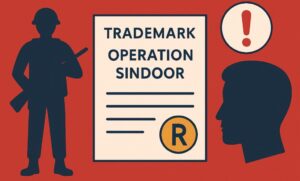Filing a trademark is crucial for protecting your restaurant’s brand identity, name, and logo from potential infringement or misuse by others. In India, trademarks are governed by the Trademarks Act, 1999, and the process of registration is overseen by the Office of the Controller General of Patents, Designs, and Trademarks (CGPDTM).
Table of Contents
ToggleStep 1: Conduct a Trademark Search
Before filing for a trademark, it is essential to conduct a comprehensive search to ensure that your desired mark is not already registered or closely resembling an existing trademark. This search can be done through the CGPDTM’s online database or with the assistance of a trademark attorney or agent. A thorough search helps avoid potential conflicts and legal complications down the line.
Step 2: Determine the Appropriate Classes
Trademarks are classified into different classes based on the goods or services they represent. Restaurants primarily fall under Class 43, which includes “services for providing food and drink; temporary accommodation.” However, depending on the offerings, restaurants may also consider filing in other related classes.
Additionally Relevant Classes for Restaurants:
- Class 39 (Transport; packaging and storage of goods; delivery of food and beverages)
- Class 29 (Dairy products, edible oils and fats)
- Class 30 (Coffee, tea, cocoa, sugar, rice, flour, bread, pastries)
- Class 32 (Beer, mineral and aerated waters, fruit beverages and juices)
Filing in multiple classes is recommended if your restaurant offers a diverse range of products or services beyond just food and beverages.
Step 3: Prepare the Application
Once you have determined that your desired mark is available, you can proceed with the application process. The trademark application can be filed online through the ipindia.gov.in website, which serves as the official portal for filing all kinds of intellectual property applications in India. Alternatively, you can opt for offline filing by sending a physical copy of the application. The prescribed form for filing a trademark application is called TM-A.
The application should include:
- Applicant’s details (name, address, and other relevant information)
- Representation of the mark (logo or wordmark)
- Goods or services for which the mark is intended (primary class and any additional classes)
- Date of first use of the mark (if applicable)
Step 4: Submit the Required Documents
Along with the application form, you must submit the following documents:
- A clear and legible representation of the mark (in JPEG or PNG format)
- Power of Attorney (if filing through a trademark agent)
- Proof of right to use the mark i.e., the User affidavit (if applicable, such as a company incorporation certificate or business registration)
Step 5: Pay the Applicable Fees
The fees for filing a trademark application in India vary based on the number of classes and the mode of filing (online or physical). For a single class in the online filing mode, the fee is currently INR 4,500 for individuals and startups/ MSMEs and INR 9,000 for others. Additional fees apply for each additional class. For example, if filing in two classes, the fee would be INR 9,000 for individuals/startups and INR 18,000 for others.
Step 6: Examination and Publication
After submission, the application will undergo a formal and substantive examination by the appropriate trademark registry. The formal examination checks if the application meets all the necessary requirements, while the substantive examination assesses if the mark is distinctive, not deceptive, and not conflicting with existing trademarks.
If the mark meets all the requirements, it will be published in the Trademarks Journal for opposition. This is an opportunity for any interested parties to oppose the registration of the mark within four months from the date of publication. If no opposition is filed or if the opposition is unsuccessful, the mark will proceed to registration.
Step 7: Registration and Renewal
If the application is successful, the trademark will be registered, and a registration certificate will be issued by the Trademark Registry. Trademarks in India are valid for 10 years from the date of filing and can be renewed indefinitely for successive 10-year periods by paying the prescribed renewal fees.It is essential to keep track of the renewal deadlines and file for renewal well in advance to avoid the lapse of your trademark registration.
Additional Considerations:
- Hiring a trademark attorney or agent can be beneficial, especially for complex cases or if you are unfamiliar with the trademark registration process.
- It is advisable to conduct periodic trademark watches to monitor for potential infringement or conflicting marks.
- Once registered, you must use the ® symbol along with your trademark to indicate its registered status.
- Proper maintenance and enforcement of your trademark rights are crucial to protect the brand’s value and reputation.
By following these steps and complying with the Trademarks Act, 1999, you can successfully register a trademark for your restaurant in India, safeguarding your brand and establishing a strong market presence.






